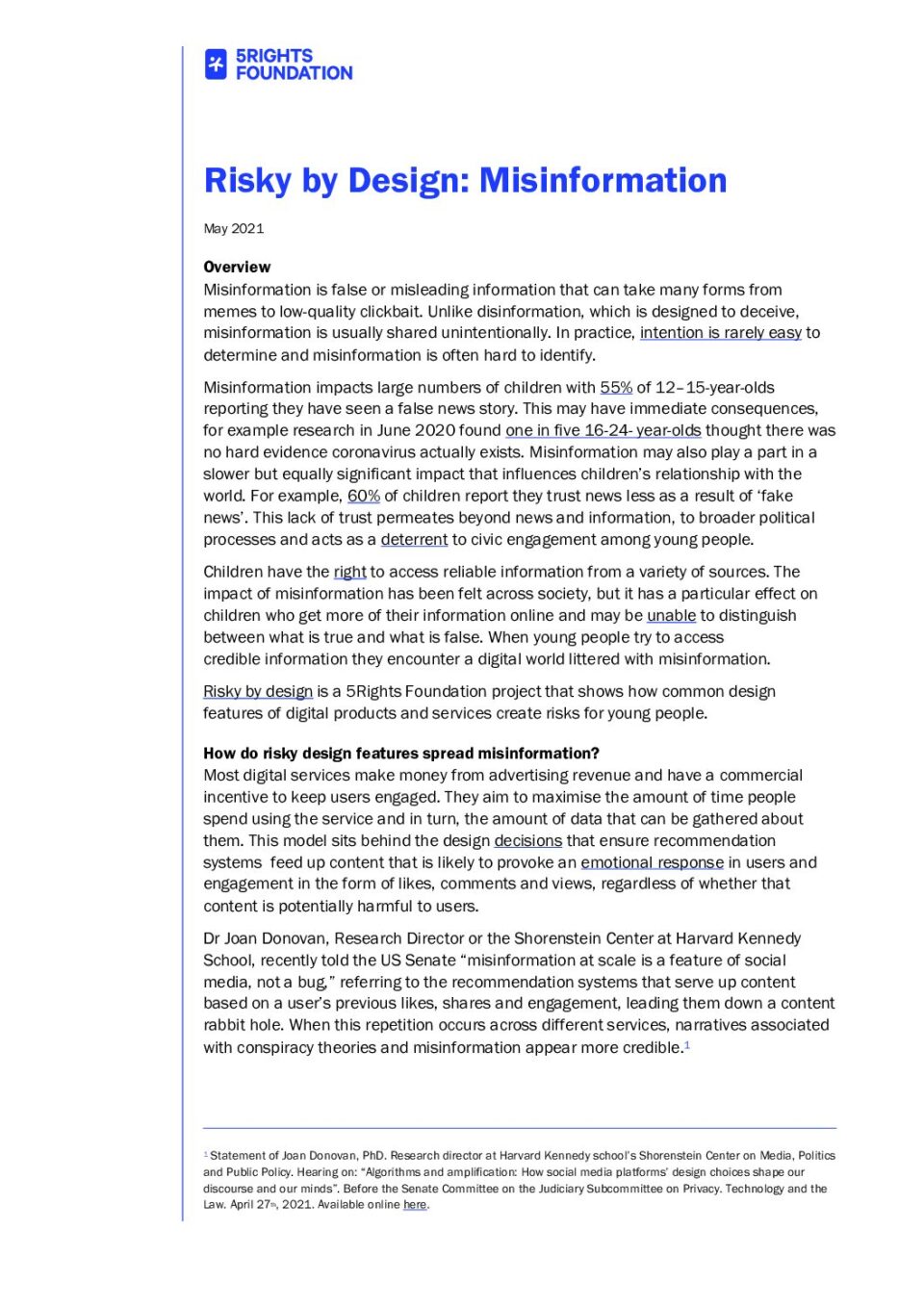Risky-By-Design – Brief on misinformation
Misinformation is false or misleading information that can take many forms from memes to low-quality clickbait. Unlike disinformation, which is designed to deceive, misinformation is usually shared unintentionally. In practice, intention is rarely easy to determine and misinformation is often hard to identify.
Misinformation impacts large numbers of children with 55% of 12–15-year-olds reporting they have seen a false news story. This may have immediate consequences, for example research in June 2020 found one in five 16-24- year-olds thought there was no hard evidence coronavirus actually exists. Misinformation may also play a part in a slower but equally significant impact that influences children’s relationship with the world.
For example, 60% of children report they trust news less as a result of ‘fake news’. This lack of trust permeates beyond news and information, to broader political processes and acts as a deterrent to civic engagement among young people.
Children have the right to access reliable information from a variety of sources. The impact of misinformation has been felt across society, but it has a particular effect on children who get more of their information online and may be unable to distinguish between what is true and what is false. When young people try to access credible information they encounter a digital world littered with misinformation. Risky-By-Design is a 5Rights Foundation project that shows how common design features of digital products and services create risks for young people.

